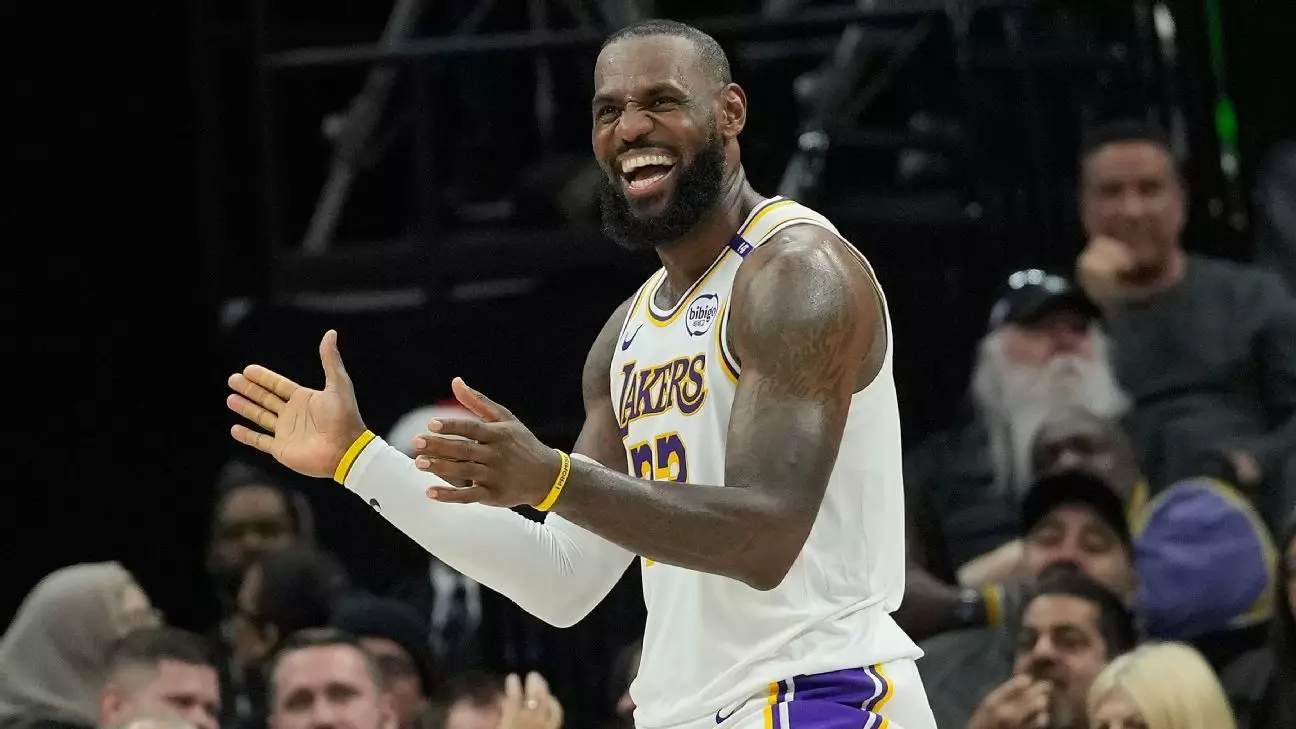LeBron James has cemented his legacy not only as one of basketball’s greatest players, but also as a perennial All-Star selection. This year, he achieved yet another milestone, reaching 21 All-Star appearances—a feat that underscores his longevity and excellence in a league that demands peak performance. Turning 40 last month, James has surpassed the previous benchmark of 19 All-Star selections set by Kareem Abdul-Jabbar, showcasing his ability to compete at an elite level, even as he ages. For a player who has consistently battled injury and physical decline at an age when most retire, James’s statistics—averaging 23.7 points, 7.5 rebounds, and 9 assists—are nothing short of remarkable.
James’s immense contributions are not only personal achievements; they symbolize a broader narrative about sustained excellence in sports, especially for aging players. While many athletes may struggle to maintain high performance levels, James has adapted his game, reflecting a keen understanding of basketball IQ and fitness management. His continued presence in the All-Star lineup challenges notions about age in sports and inspires both current players and aspiring athletes.
Joining LeBron in the Western Conference All-Star lineup is an impressive array of talent, including Nikola Jokic, Kevin Durant, Shai Gilgeous-Alexander, and Stephen Curry. Jokic, the league MVP, exemplifies the modern center’s role with his multifaceted ability to score and assist, averaging an astounding 30.1 points, 13.2 rebounds, and nearly 10 assists per game. Meanwhile, Curry’s return to the starting lineup, especially in his home arena of San Francisco, captivates the audience with his unique ability to revolutionize the game through long-range shooting.
In contrast, Eastern Conference stars like Giannis Antetokounmpo and Jayson Tatum continue to draw fan attention, highlighting the league’s shifting dynamics. Antetokounmpo’s consistency as a fan favorite and Tatum’s growth into a premier scorer represent the new generation of players who are not only skilled but also charismatic, resonating with the NBA’s global audience. Such players are reshaping how younger fans engage with the sport, propelling a new wave of fandom.
The method by which All-Star selections are made has also evolved, becoming a hybrid system that combines fan votes, media insights, and player input. This year’s selections highlighted the competitive nature of the voting process. The Eastern Conference’s second backcourt spot was particularly intriguing, with Jalen Brunson ultimately clinching it over other worthy candidates like LaMelo Ball and Damian Lillard. This dynamic illustrates the balance between popularity and performance in All-Star decisions, where fan engagement plays a crucial role.
As the NBA continues to grow in its inclusivity and direct engagement with fans, the voting system reflects that evolution by empowering everyday fans to influence such prestigious selections. This level of involvement fosters a deeper connection between fans and players, making the All-Star Game a celebration of basketball that feels communal rather than exclusive.
Looking forward, the introduction of new formats, such as the division of teams into three and incorporating the Rising Stars Challenge winners, indicates a strategic pivot to keep the All-Star Game fresh and exciting. Coaches like Mark Daignault and Kenny Atkinson will bring their unique perspectives on strategy and player utilization to the format, enriching the overall experience of the event. This evolving landscape emphasizes adaptability, ensuring that the All-Star Game remains relevant and entertaining amid changing audience expectations and player dynamics.
LeBron James’s record-setting 21st All-Star selection is not just a personal achievement; it epitomizes a larger narrative of evolution within the NBA. With each passing season, the league continues to witness the emergence of new stars, changing voting methodologies, and innovative formats for showcasing talent. As we celebrate the legends of the past while embracing the stars of the present and future, the All-Star Game remains a significant benchmark of excellence in professional basketball.

